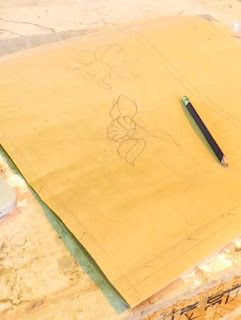After hiking the last two nature preserves with my adoring husband, Sherman, and his faithful companion, Cell Phone, I decided to once again hike alone.
This solo venture brings me to The Bicentennial Woods, a hilly 80 acre preserve in northern Allen county. The property was acquired to honor Fort Wayne's Bicentennial in 1994.
 |
| Willow Creek, a tributary of Cedar Creek |
As Fort Wayne approached its 200th anniversary, ACRES began looking for an appropriate property to commemorate the historic event.
 |
| A small stream leading to Willow Creek |
The Bicentennial Woods location was selected because the gigantic trees growing here are representative of what much of the area looked like before it was settled.
 |
| One of several scenic bridges within The Bicentennial Woods preserve |
Only a few trees have ever been removed from this property, which is believed to the last stand of virgin timber in Allen County. Stately oak trees, some with trunks nearing four feet in diameter, and huge sycamores dominate this hilly, heavily wooded preserve.
 |
I'm sure this knobby tree formation is here for some interesting scientific reason.
However, my brain can only see one thing... |
 |
| An amazingly textural, twisted tree |
Besides the towering oaks, hickories, sycamores, and dogwoods that surrounded me, I also took in these interesting sights...
 |
| Even the bracket fungi look like they need some rain. |
 |
Dryad's Saddle, polypore bracket fungus
The name "Dryad's Saddle" refers to tree nymphs of Greek mythology called dryads. According to legends, dryads are small, shy wood spirits who look after the forest and keep an eye on the health of the trees. This mushroom's shape and size make it a suitable, and probably rather comfortable, seat for a dryad.
|
 |
The Wood Nymph, 1898
by Charles Marion Russell |
 |
Chickweed
In folklore, a sprig of chickweed carried in your pocket was said to draw the attention of a
loved one or ensure the fidelity of your mate.
|
 |
A crazy, wild stand of creeping, crawling, hanging vines.
"The vine embraces the elm, and other plants cling to the vine.
So that things which have no powers of sense to perceive anything else,
seem strongly to feel the advantages of union."
~Desiderius Erasmus, 1521 |
I would enjoy a return trip to Bicentennial woods. Perhaps the fall, when the leaves are turning, would be a good time to share this little part of Indiana's natural splendor with my kids. And who knows...maybe Sherman and Cell Phone will join us, too!

























































